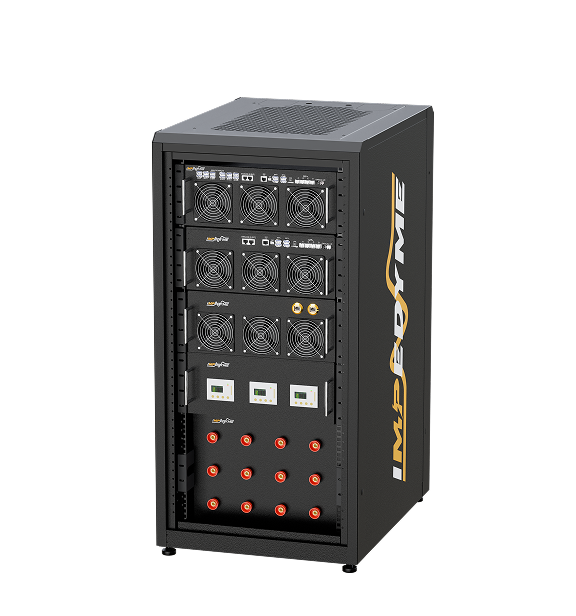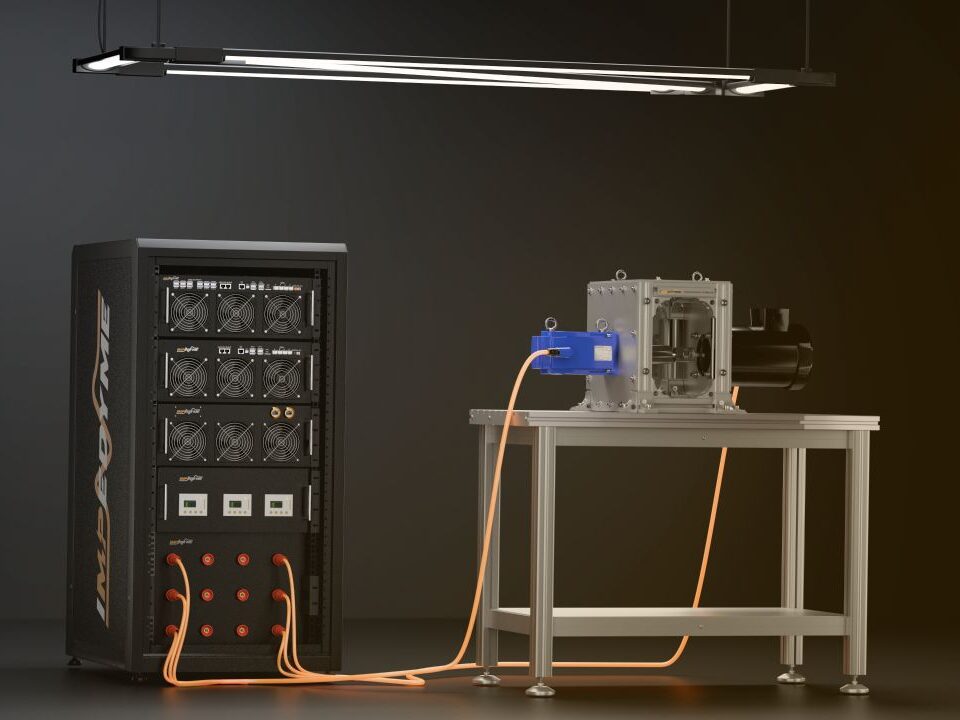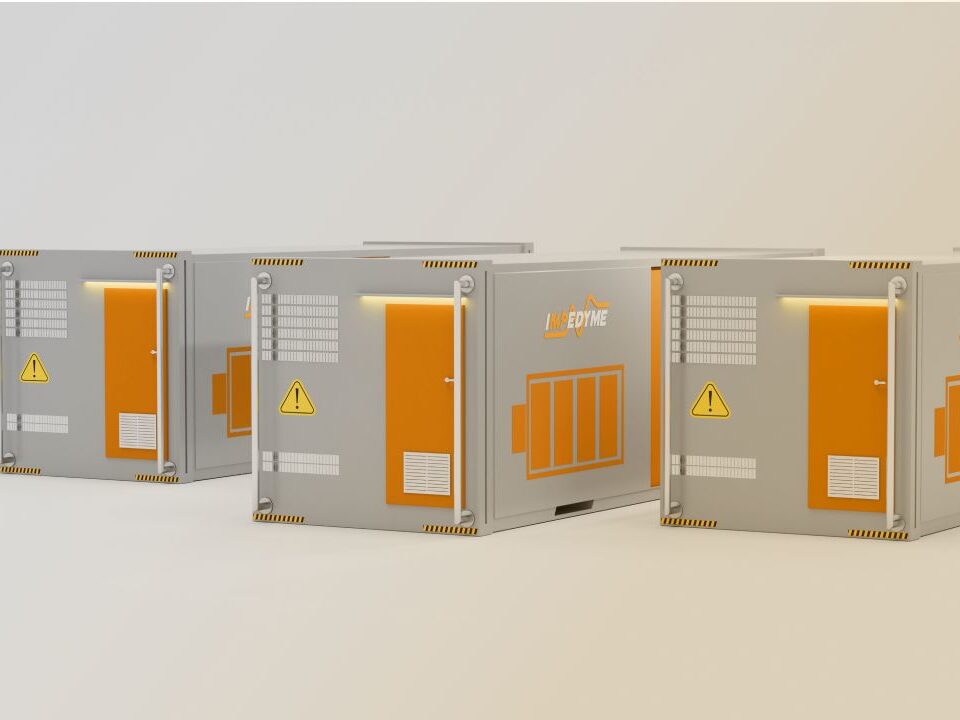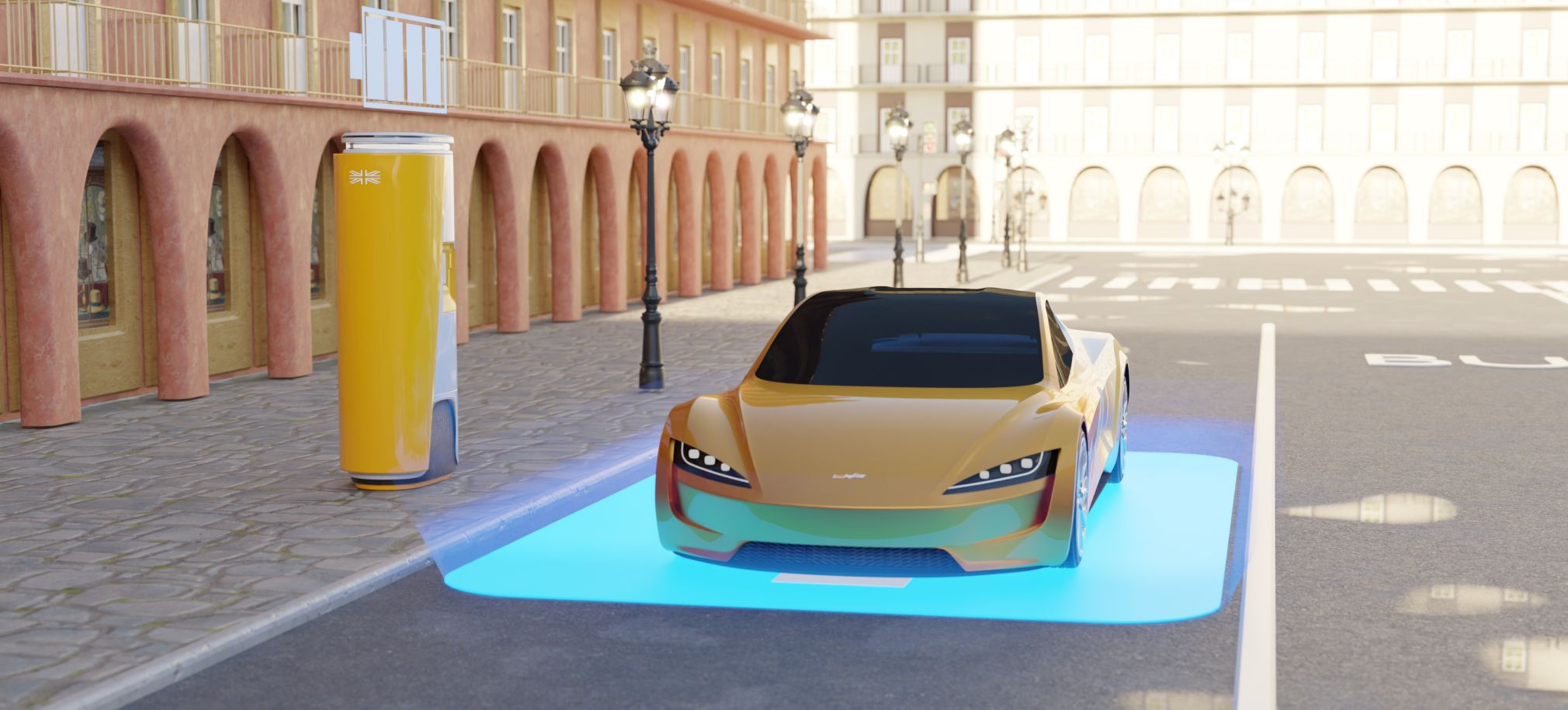
-
 Induction Motor
Induction Motor
-
 Automotive Electrical System Simulation
Automotive Electrical System Simulation
-
 DC/DC Bidirectional Converter
DC/DC Bidirectional Converter
-
 PWM Control for Brushless DC
PWM Control for Brushless DC
-
 BLDC Motor Control and Drive Simulation
BLDC Motor Control and Drive Simulation
-
 Electric Vehicle Fast Charger Simulation
Electric Vehicle Fast Charger Simulation
-
 DFIG Wind Turbine Simulation
DFIG Wind Turbine Simulation
-
 Dual Active Bridge
Dual Active Bridge
-
 EV Dynamometer Test Environment Simulation
EV Dynamometer Test Environment Simulation
-
 Electric Vehicle Simulation
Electric Vehicle Simulation
-
 Three-Phase Grid-Connected Inverter Using Direct-Q…
Three-Phase Grid-Connected Inverter Using Direct-Q…
-
 Three-Phase Grid-Connected Solar Photovoltaic
Three-Phase Grid-Connected Solar Photovoltaic
-
 Grid-Connected Rectifier
Grid-Connected Rectifier
-
 Grid-Tied Inverter System
Grid-Tied Inverter System
-
 Torque Control in a Hybrid Excitation Synchronous …
Torque Control in a Hybrid Excitation Synchronous …
-
 Wye-Delta Starting Circuit
Wye-Delta Starting Circuit
-
 IPMSM-Based Axle-Drive
IPMSM-Based Axle-Drive
-
 Simplified Parallel Hybrid Electric Vehicle
Simplified Parallel Hybrid Electric Vehicle
-
 Simplified Series Hybrid Electric Vehicle
Simplified Series Hybrid Electric Vehicle
-
 Series-Parallel Hybrid Electric Vehicle
Series-Parallel Hybrid Electric Vehicle
-
 Three-Phase Matrix Converter Simulation
Three-Phase Matrix Converter Simulation
-
 Venturini Modulation for Three-Phase Matrix Conver…
Venturini Modulation for Three-Phase Matrix Conver…
-
 Microgrid Frequency Regulation Using Vehicle-to-Gr…
Microgrid Frequency Regulation Using Vehicle-to-Gr…
-
 Three-Phase Modular Multilevel Converter
Three-Phase Modular Multilevel Converter
-
 Field-Oriented Control
Field-Oriented Control
-
 Interior Permanent Magnet Synchronous Generator
Interior Permanent Magnet Synchronous Generator
-
 Permanent Magnet Synchronous Machine
Permanent Magnet Synchronous Machine
-
 PMSM Rotor Angular Velocity
PMSM Rotor Angular Velocity
-
 PMSM-Based Electrical Traction Drive
PMSM-Based Electrical Traction Drive
-
 Maximum Power Point Tracking
Maximum Power Point Tracking
-
 Six-Phase Permanent Magnet Synchronous Machine
Six-Phase Permanent Magnet Synchronous Machine
-
 Synchronous Machine-Based Electrical Drive Simulat…
Synchronous Machine-Based Electrical Drive Simulat…
-
 Single-Stage Solar Inverter
Single-Stage Solar Inverter
-
 Three-Phase Cycloconverter Simulation
Three-Phase Cycloconverter Simulation
-
 Totem-Pole PFC Simulation
Totem-Pole PFC Simulation
-
 Twelve-Pulse Thyristor Rectifier
Twelve-Pulse Thyristor Rectifier
-
 Two-Wheeler On-Board Charger
Two-Wheeler On-Board Charger
-
 Vienna Rectifier Simulation
Vienna Rectifier Simulation
-
 High-Voltage Direct Current
High-Voltage Direct Current
-
 Wireless Power Transfer
Wireless Power Transfer
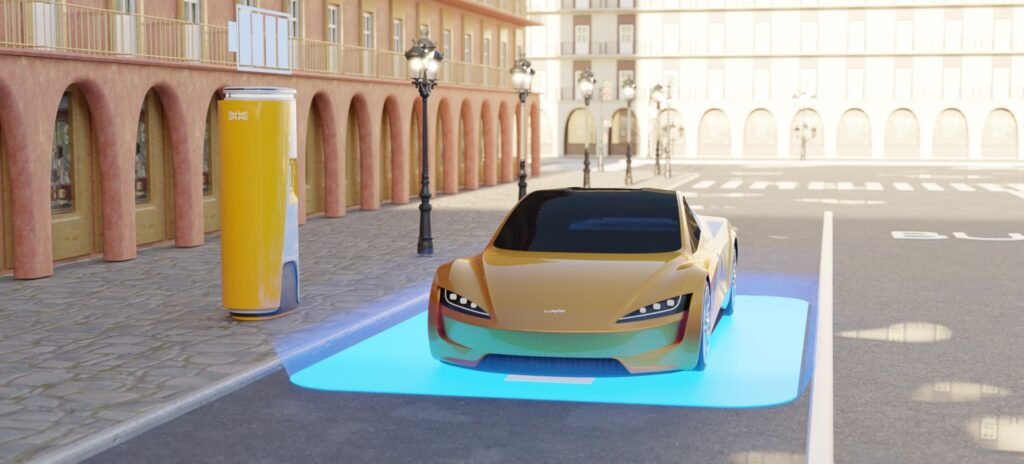
Comprehensive Documentation for Wireless Power Transfer (WPT) System Simulation for Electric Vehicles
Table of Contents
- 1 Comprehensive Documentation for Wireless Power Transfer (WPT) System Simulation for Electric Vehicles
- 1.1 Introduction
- 1.2 System Overview
- 1.2.1 What is Wireless Power Transfer (WPT)?
- 1.2.2 Purpose of the Simulation
- 1.3 Key Features
- 1.3.1 High-Frequency (HF) Power Conversion
- 1.3.2 Magnetically Coupled Coils for Wireless Energy Transfer
- 1.3.3 Power Transfer Efficiency Optimization
- 1.3.4 Safety and Electromagnetic Compatibility (EMC) Compliance
- 1.3.5 Bidirectional Power Flow Capability
- 1.3.6 Convenience
- 1.3.7 Safety
- 1.3.8 Efficiency
- 1.3.9 Flexibility
- 1.4 Simulation Objectives
- 1.5 Technical Description
- 1.5.1 System Configuration
- 1.5.2 Control Methodology
- 1.6 Advantages of WPT for EV Charging
- 1.7 Applications
- 1.7.1 EV Charging Infrastructure
- 1.7.2 Public Transportation
- 1.7.3 Fleet Management
- 1.7.4 Commercial and Industrial Applications
- 1.7.5 Residential Applications
- 1.7.6 Aerospace and Defense
- 1.7.7 Research and Development
- 1.7.8 Regulatory Compliance and Certification
- 1.7.9 Education and Training
- 1.7.10 Simulation Benefits
- 1.8 Summary
- 1.9 Future Enhancements
- 1.10
- 1.10.1 Induction Motor
- 1.10.2 Automotive Electrical System Simulation
- 1.10.3 DC/DC Bidirectional Converter
- 1.10.4 PWM Control for Brushless DC
Introduction
Wireless Power Transfer (WPT) technology enables efficient and contactless charging of electric vehicles (EVs), eliminating the need for physical connectors and improving convenience. This project focuses on simulating a 5kW WPT system designed for EV charging, utilizing high-frequency (HF) power conversion and magnetically coupled coils for energy transfer.

System Overview
What is Wireless Power Transfer (WPT)?
WPT is a contactless energy transfer method that relies on electromagnetic induction or resonant coupling to transmit power efficiently. Key features include:
✔ Elimination of physical connectors, reducing wear and tear.
✔ Enhanced safety, as no direct electrical contact is required.
✔ High reliability, even in harsh environments.
✔ Seamless user experience, improving EV adoption rates.
Purpose of the Simulation
The WPT system simulation is designed to:
✔ Model high-frequency power conversion and coil coupling.
✔ Optimize power transfer efficiency under varying conditions.
✔ Analyze magnetic field distribution and its impact on system performance.
✔ Implement adaptive impedance matching for maximum energy transfer.
✔ Evaluate system stability, misalignment tolerance, and safety mechanisms.
Key Features
High-Frequency (HF) Power Conversion
✔ Converts AC grid power into high-frequency AC for efficient wireless transfer.
✔ Uses resonant inverters to reduce switching losses.
✔ Supports soft-switching techniques for enhanced efficiency.
➡️ Benefit: Minimizes energy losses and improves conversion efficiency.
Magnetically Coupled Coils for Wireless Energy Transfer
✔ Utilizes loosely coupled resonant coils to transfer energy.
✔ Optimized coil design for maximum inductive coupling.
✔ Reduces sensitivity to coil misalignment.
➡️ Benefit: Enables high-efficiency energy transfer even in dynamic conditions.
Power Transfer Efficiency Optimization
✔ Implements adaptive impedance matching for optimal power transfer.
✔ Evaluates coil misalignment effects and compensates for variations.
✔ Includes real-time feedback control for power regulation.
➡️ Benefit: Ensures stable and efficient power delivery to the EV battery.
Safety and Electromagnetic Compatibility (EMC) Compliance
✔ Incorporates overcurrent and overvoltage protection mechanisms.
✔ Implements shielding techniques to minimize electromagnetic interference (EMI).
✔ Ensures compliance with international WPT standards (SAE J2954, IEC 61980).
➡️ Benefit: Enhances system reliability and regulatory approval.
Bidirectional Power Flow Capability
✔ Supports Vehicle-to-Grid (V2G) and Grid-to-Vehicle (G2V) power transfer.
✔ Enables regenerative energy recovery from the EV back to the grid.
✔ Improves grid stability by integrating renewable energy sources.
➡️ Benefit: Enhances energy efficiency and sustainability.
Convenience
WPT systems eliminate the need for physical connectors, providing a seamless and user-friendly charging experience.
Safety
WPT systems reduce the risk of electrical hazards, such as sparks and short circuits, improving safety.
Efficiency
Simulations help optimize power transfer efficiency, reducing energy losses and improving overall system performance.
Flexibility
WPT systems can be integrated into various environments, including roads, parking lots, and industrial facilities.
Simulation Objectives
This simulation aims to:
✔ Evaluate WPT efficiency and power conversion losses.
✔ Analyze coil design parameters and their impact on power transfer.
✔ Optimize misalignment tolerance for real-world EV parking conditions.
✔ Implement resonant control strategies for maximum power transfer.
Technical Description
System Configuration
- Input: AC power from the grid.
- Power Conversion: High-frequency inverter for AC-AC conversion.
- Wireless Transfer: Magnetically coupled transmitter and receiver coils.
- Output: Regulated DC power for EV battery charging.
Control Methodology
✔ Resonant Frequency Tracking: Ensures efficient power transfer under varying loads.
✔ Phase-Locked Loop (PLL) Control: Synchronizes transmitter and receiver signals.
✔ Adaptive Impedance Matching: Maximizes energy transfer efficiency.
✔ Feedback Control: Monitors voltage, current, and coil alignment.
Advantages of WPT for EV Charging
✔ Eliminates physical connectors, reducing maintenance costs.
✔ Enhances charging convenience, especially for autonomous EVs.
✔ Improves weather resistance, as no open electrical contacts are exposed.
✔ Supports dynamic charging, enabling EVs to charge while in motion.
Applications
EV Charging Infrastructure
- Static Wireless Charging: WPT systems are used for stationary charging of EVs in parking lots, garages, and charging stations. Simulations help optimize charging efficiency, alignment, and power transfer.
- Dynamic Wireless Charging: WPT systems embedded in roadways enable EVs to charge while driving, extending their range and reducing the need for frequent stops. Simulations analyze power transfer efficiency and vehicle dynamics.
Public Transportation
- Electric Buses: WPT systems are used to charge electric buses at bus stops or depots, reducing downtime and improving operational efficiency. Simulations optimize charging schedules and power transfer.
- Trams and Light Rail: WPT systems can be integrated into tram and light rail systems to provide continuous charging, ensuring reliable operation and reducing the need for large onboard batteries.
Fleet Management
- Logistics and Delivery Vehicles: WPT systems are used in electric delivery vans and trucks to enable efficient charging at distribution centers or during delivery routes. Simulations optimize energy management and fleet operations.
- Autonomous Fleets: WPT systems support the operation of autonomous electric vehicles by enabling seamless charging without human intervention. Simulations ensure reliable and efficient power transfer.
Commercial and Industrial Applications
- Warehouse Automation: WPT systems are used to charge electric forklifts and automated guided vehicles (AGVs) in warehouses, improving efficiency and reducing downtime.
- Construction Equipment: WPT systems can be used to charge electric construction equipment, such as excavators and loaders, improving energy efficiency and reducing emissions.
Residential Applications
- Home Charging: WPT systems provide a convenient and safe charging solution for EVs at home, eliminating the need for physical connectors. Simulations optimize charging efficiency and user experience.
- Multi-Unit Dwellings: WPT systems can be installed in apartment complexes and condominiums to provide shared charging infrastructure for residents.
Aerospace and Defense
- Electric Aircraft: WPT systems are being explored for charging electric aircraft, including drones and unmanned aerial vehicles (UAVs), improving operational efficiency and reducing downtime.
- Military Vehicles: WPT systems can be used to charge electric military vehicles in the field, ensuring reliable operation in remote and challenging environments.
Research and Development
- Prototype Testing: Simulations are used to test and validate WPT system prototypes, reducing the need for physical testing and accelerating development.
- Control Strategy Development: Simulations help develop and optimize control algorithms for WPT systems, ensuring efficient and reliable power transfer.
- Fault Analysis: Simulations help study the behavior of WPT systems under fault conditions, improving system reliability and safety.
Regulatory Compliance and Certification
- Safety Testing: Simulations evaluate the performance of WPT systems under various safety test conditions, ensuring compliance with safety regulations.
- Efficiency Standards: Simulations ensure that WPT systems meet industry standards for energy efficiency and power transfer.
- Electromagnetic Compatibility (EMC): Simulations analyze the electromagnetic emissions and interference of WPT systems, ensuring compliance with EMC regulations.
Education and Training
- Academic Research: Simulations are used in academic research to study the performance and optimization of WPT systems for EVs.
- Professional Training: Simulations are used in training programs for engineers and technicians, providing hands-on experience with WPT systems.
Simulation Benefits
By utilizing this simulation, engineers can:
✔ Optimize WPT system design for maximum efficiency.
✔ Evaluate coil configurations and their impact on performance.
✔ Enhance control algorithms for adaptive energy transfer.
✔ Ensure safety compliance with international standards.
Summary
This project provides a comprehensive framework for simulating a 5kW WPT system for EV charging, focusing on high-frequency power conversion, coil design, and efficiency optimization. By integrating real-time control strategies and adaptive impedance matching, the simulation ensures a robust and reliable wireless charging solution.
Future Enhancements
✔ Implementation of AI-based optimization for adaptive power control.
✔ Development of dynamic WPT for on-the-move EV charging.
✔ Integration with ultra-fast charging technologies for reduced charging time.
✔ Advanced misalignment compensation using active coil adjustments.
Wireless Power Transfer (WPT) systems are transforming EV charging infrastructure by offering efficient, reliable, and contactless energy transfer. This project simulates a 5kW WPT system, optimizing power conversion, efficiency, and safety, contributing to the advancement of next-generation EV charging solutions.
